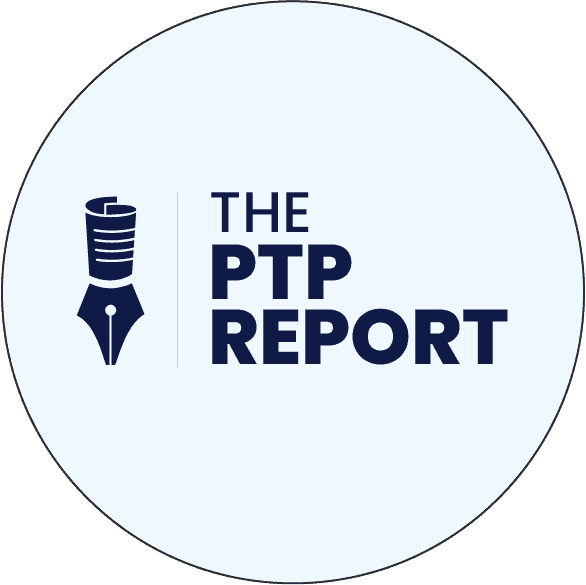One thing all leaders today seem to agree upon: talking about AI is good.
A Financial Times analysis of S&P 500 filings found CEOs and artificial intelligence increasingly go together: 374 mentioned AI on earnings calls last year, and nine out of 10 in very positive terms.
McKinsey released a report this summer saying eight in 10 companies claim to be using AI, and yet around the same percentage report no bottom-line benefits.
McKinsey’s The state of AI shows that, regardless of company size, many senior leaders aren’t actively engaged with AI or role-modeling use (63%+), the companies often lack clear road maps (75%+) and mechanisms for feedback and improvement (76%+), haven’t communicated compellingly on the need for AI adoption (81%+), or are tracking well-defined KPIs around their AI projects (82%+).
Only 28% have the CEO leading governance.
In other words, there’s a lot of talking, piloting, and nodding at AI in US businesses and a lot less real integration and AI leadership going on.
While it may seem like an inevitability that we’ll all get to AI eventually, the leaders who ARE doing those things above—leading by example, laying out clear guidance and need, reaching outside the comfortable, actually rethinking workflows, and incorporating AI in business strategy—are the ones getting real value.
AI-Driven Leadership Transformation: Fact and Fiction
Cisco President and Chief Product Officer (CPO) Jeetu Patel has been an outspoken advocate for embracing AI transformation sooner rather than later. He points out that in almost every case, the longer a company is engaged with AI, the higher their return.
This is obvious, yes, but his point is this: the right time to engage with AI for CEOs was yesterday. GenAI may not be ready to run autonomously without human oversight, and yes, agents are just starting to step into the space left by all the hype that has preceded them.
But leaders need to understand how AI works—for real and deeply—so they can develop their own instincts around LLMs, providers, capabilities, and risks.
Today’s systems bring meaningful ability to grow a workforce’s capacities, even as we are still overcoming concerns around trust, preparing our infrastructure and bandwidth, and readying our data.
Failures with AI today are similar to failures we’ve seen with past innovations: not adapting processes and not really changing how we work.
Here are suggestions for ways leaders can get this on the right track.
Harvard Business Review AI Research: Skills for Leading AI Adoption in Enterprises
Intriguing observations from academics Herminia Ibarra and Michael G. Jacobides ran last week in the Harvard Business Review on the topic of senior executive struggles in this area.
They looked at the gaps in the skills needed from both research and their own work in executive AI training, and presented five competencies they believed will be increasingly essential in our future with AI:
Building Relationships across Industries: It’s not new that leaders with more diverse networks are more innovative. The less insular your exposure, the more novel information you’re exposed to. With technology (and AI more than ever), this is especially true. Nothing substitutes for quality engagement with someone who has experience integrating this technology, and in this area it also benefits leaders to be highly proactive. Microsoft’s Satya Nadella, for example, invited the CEOs of tiny startups they’d acquired to an annual gathering of what had traditionally been only for their top executives. This injected new voices into their traditional leadership conversations.
Rethinking and Redesigning: I’ve written about this previously, but it’s more than hype to say AI is going change every business on Earth. In our last AI news roundup, we ran a quote from Walmart CEO Doug McMillon that AI will “literally change every job” on the planet. It is not something we just snap onto what we’re doing now, nor a little extra spice on the top. The authors’ research demonstrates that GenAI benefits really come when leaders are willing to truly re-architect their processes, rethinking current business models. They give the example of SAP CFO Dominik Asam who has automated large parts of his department’s back-office work, freeing up staff for higher-value tasks. He uses AI for insights on this reorganization, too, getting varying suggestions on how best to reallocate resources.
Collaborating with Technology: AI isn’t conscious as we know it, though it may be an ‘alien intelligence,’ as psychotherapist Gary Greenberg has described it in his own analysis of ChatGPT. I’ve written before on thinking about AI agents like workers, and this means going beyond viewing it as an additional source, like a new report. The HBR research shows that real human co-intelligence with AI greatly reduces both cost and time in problem-solving, but this requires iteration with frequent feedback loops. Using AI as a devil’s advocate to challenge consensus or actively provide alternative points of view can be surprisingly effective in my own experience.
Developing Your Internal Talent: I hear a lot of stories about companies issuing top-down requirements on AI. In evaluations, workers must describe how they’re using it and how it’s bringing more efficiency. I can understand this impulse, but better, in my view, is to encourage bottom-up innovation. This comes with training, shared insights, and of course, modeled behavior (see below). Most of all, your employees must be free to experiment and make mistakes, and they need to learn where they can and can’t trust AI within company policy (and your leadership is necessary here as well). Above all, the new skills people are going to need must be promoted, and this is better done through coaching and collaboration than inspection and mandate. When AI feels like an additional, unpaid job on top of our current work—instead of a novel way to eliminate repetition and other workplace drudgery—we all lose.
Modeling Change: Obviously leading by example is not newly important in leadership, but here they mean doing more than getting your hands dirty with AI. They recommend injecting it into your personal life as well as work—every day. Use voice mode and talk out your prompts, have it give you alternatives for everything, and use AI to upgrade your own communications, and coach yourself, too. Walmart’s chief people officer Donna Morris uses AI when searching for senior leaders, yes, but also at home, for travel advice and even searching medical information for her family.
On AI Adoption for Executives
Here are some ways other executives are talking about AI now.
Cisco’s Jeetu Patel first got me thinking about this topic with his statement that “CEOs need to master AI” here and now, from an interview with Ramzan Karmali on Yahoo Finance’s Market Sunrise. To him, AI is far more than even the hype. It is truly a seismic shift.
He has incentive, of course—his company has invested a lot and were design partners with OpenAI on Codex. But Patel believes that in many areas, AI brings true 10–50x productivity increases and cites Cisco’s own gains in customer service. They have already automated first calls in nearly every department at the company.
Every function at Cisco, he believes, will be reimagined with AI in the near future, with every human also a manager of AI agents. Still, he believes cutting entry-level hiring is a grave error. Young people are more likely to use AI intuitively and bring fresh perspectives that are needed at all organizations.
As the barnstorming center of the AI story, Nvidia has more stake in the game than anyone, but CEO Jensen Huang also practices what he preaches. He recently raved about Google Gemini’s Nano Banana for how easy it is to use, and how it democratizes the technology.
Huang told Wired recently that he uses AI every day for access to information, learning, writing, thinking, and in formulating new ideas.
He uses it like a word processor, taking advantage of its memory of his style. He calls it a “thinking partner” in ways that improve the quality of his work.
Specifically, Huang says he uses Gemini for technical work, Grok for artistic, Perplexity for fast information, with ChatGPT as his everyday workhorse.
And when he’s doing “something serious,” he gives the same prompt to all of them at once and even has them critique each other’s work.
In finance, JPMorgan Chase CEO Jamie Dimon says AI is already reshaping the company’s operations, from fraud detection to marketing to customer service to research. He calls it one of the bank’s most essential tools, telling Fortune that some 150,000 employees use it daily and that “It affects everything.”
Dimon says the company’s AI spend has already paid for itself ($2 billion a year), though he acknowledges some of the benefits are easier to quantify than others.
On job displacement, Dimon believes there will be positions lost, though he encourages managers to be proactive now to avoid suffering later. “You’re better off being way ahead of the curve and retrain people.”
But his bottom line? Act now.
“I think people shouldn’t put their head in the sand… Managers and leaders have to get their mind working on how they’re gonna use this thing.”
AI and the Bottom Line: Spend Isn’t the Easy Answer
With all the news around pilots failing, just spending money on R&D isn’t taking companies where they want to go. A lot of organizations are experimenting with (instead of actually implementing) the technology.
To succeed requires true AI collaboration and innovation, and this means redesigning workflows and rethinking the work itself, being smart about measurements, and governing for real.
Leaders need to do more than get their hands dirty. We need to understand AI where it lives now, and boost effective adoption, trust, and training over just freezing hiring.
As a proudly AI-first company, PTP incorporates AI into our decision-making, first contact handling, and recruiting, and we believe in innovating throughout the business with care.
I have seen first-hand the benefits of bottom-up, practical AI implementation, but ultimately, if you want true AI organizational readiness, it must also begin at the top.
References
5 Critical Skills Leaders Need in the Age of AI, Harvard Business Review
Seizing the agentic AI advantage, McKinsey
Cisco’s AI-first strategy with President Jeetu Patel, NBC
Jamie Dimon warns leaders not to ‘put their head in the sand’ about AI. ‘It is going to affect jobs’, Fortune
Nvidia CEO Jensen Huang Is Bananas for Google Gemini’s AI Image Generator, Wired





